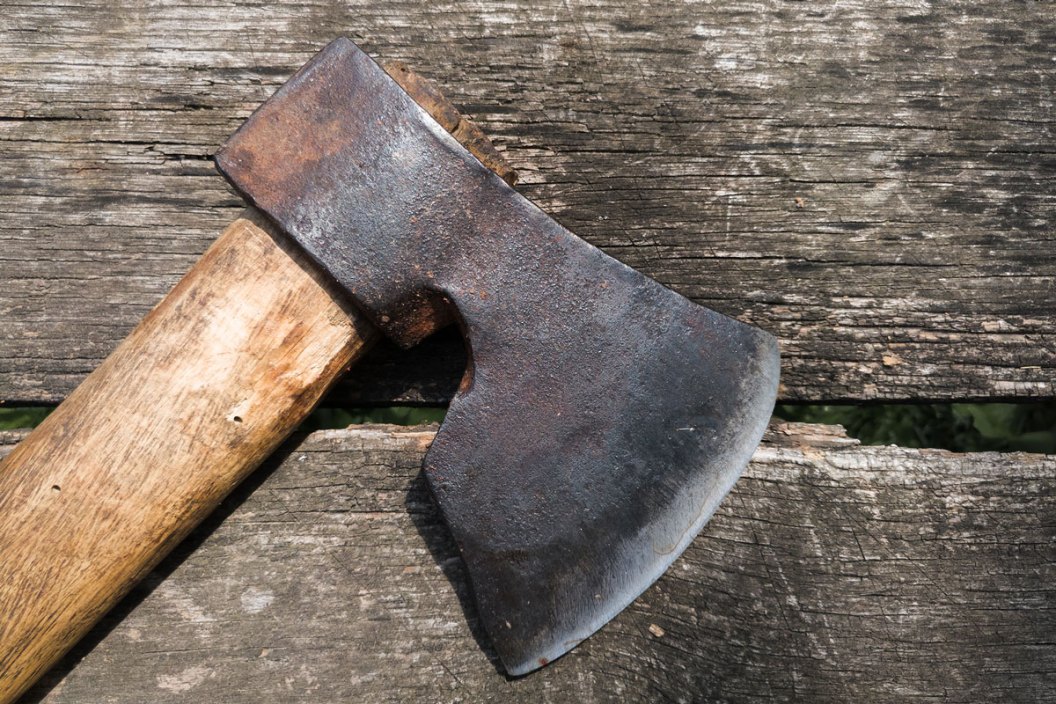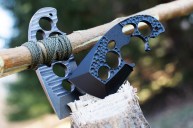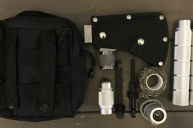The right kind of hatchet can do more than a knife and almost as much as an axe or a maul.
When people are asked what's the one tool they'd want in a survival situation, many would say some kind of survival knife. However, many would argue that a hatchet makes for a far more versatile tool, if you can only have one.
A good, sharp, carbon steel hatchet, can be used for many of the tasks that a knife can be used for, along with a host of other tasks requiring more force, like chopping various materials and processing wood for firewood. It can be used to split fairly large logs, as well as process smaller pieces for kindling.
It can also be used for fine tasks like shaving and creating feather sticks for firestarters, and even for felling small trees.
A survival hatchet or survival axe may also have additional features that further expands its versatility as a survival tool, especially for wilderness survival. Most survivalists would prefer to have a knife along with either a hatchet or a small saw in their bug out bag.
Many prefer saws for bushcraft or backpacking because they're simply lighter and require less effort to use for most applications. While a saw is extremely useful for woodworking and makes for fast cuts, the fact is, in extended circumstances, a saw can't be sharpened in the field, but a hatchet or axe can be.
Some small hatchets, sometimes called camping axes, are made a solid full-tang single piece of steel with a leather grip or a rubber grip, basically built like a hammer. A full-tang hatchet or axe will strike harder and you don't run the risk of snapping the handle off at the head or the head becoming loose, but all that steel also means a lot more weight.
Most hatchets consist of a forged steel axe head with a wood or fiberglass handle. A longer handle means the more useful a hatchet is for large chopping tasks and for splitting wood. Of course, the longer the handle gets, the closer a hatchet gets to being an axe.
The best survival hatchet to add to a survival kit is something in between a hatchet and an axe with an ergonomic handle that's long enough for splitting wood, but shaped so it's also easy and comfortable to use for lighter chopping tasks and delicate work.
For the head, a high-carbon steel will keep an edge longer and resist chipping, but will be a bit more difficult to sharpen. A fiberglass handle is great and difficult to break, but the wonderful thing about a wood handle on a hatchet or axe, is that if it ever breaks, a new handle can be readily carved with knife in the middle of nowhere.
In a pinch, a hatchet can make a heck of a self-defense tool. After all, small and large axes were used on battlefields for centuries.
So if you're going to add a hatchet to your survival gear, make sure you work with it in the field and become familiar with it. And also, think about how you're going to carry it. Most people lash a hatchet to the outside of their pack, which requires some kind of sheath on the axe head. Some "survival hatchets" will come with a nylon sheath of questionable ruggedness, but you can always count on a good leather sheath. Choose one with a belt loop if you can, just so you have the option to carry it this way.
There are a lot of different axe head shapes out there as well. An outdoorsman may say a broad blade is better, while some preppers might say a narrow tactical tomahawk style head is best. Pay attention to the shape of the bit, or the beveled part of the axe head. A thicker bit will be better for splitting wood, but will not be as sharp or as useful for other tasks as a thinner bit.
Even if a thin bit hatchet isn't great for splitting logs, it can be used to carve a wedge and then to make a starter cut in a log for the wedge, and large firewood can be split that way.
Pick what works for you. For survival, you want the biggest, heavy-duty axe head you can get that's still light enough to be totable with either a well-made wood handle or a fiberglass handle for durability.
You can find a number of compact, affordable and well-made hatchets from companies like Gerber, CRKT, SOG, Fiskars, Schrade or even high-quality, no-name, general-use hatchets from Amazon or the local hardware store or big box retailer.
NEXT: HUNTER TAKES DOWN A BIG TEXAS HOG WITH A .30-30 WINCHESTER
WATCH





